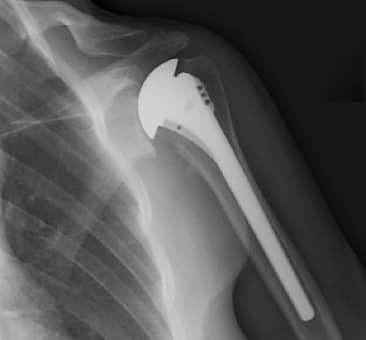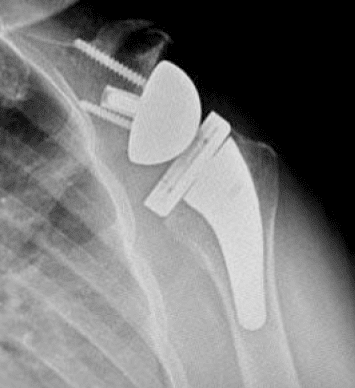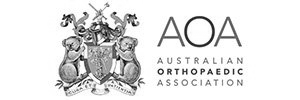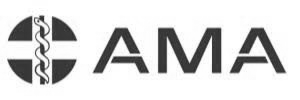Shoulder Joint Replacement
What is Shoulder Joint Replacement?
Shoulder Joint Replacements surgery are usually done to relieve pain and when all non-operative treatment to relieve pain have failed. It is a successful in relieving joint pain.
Shoulder Joint Replacement surgery removes the damaged parts of the shoulder where contact between the worn humeral head and shoulder blade socket cause pain.
The surgery involves the removal of the damaged components and their replacement with new artificial bearings components.and surfaces to relieve pain.
Types of Shoulder Replacement Surgery
In shoulder replacement surgery artificial components called prostheses can be used for:
- Head of the humerus bone (ball),
- Socket (glenoid) or both
Total Shoulder Replacement
The conventional approach is Total Shoulder Joint Replacement surgery . This involves replacing the arthritic joint surfaces with a highly polished metal ball attached to a stem, and a plastic socket.
Candidates for conventional total shoulder replacement are patients with bone-on-bone osteoarthritis and intact rotator cuff tendons.
Reverse Total Shoulder Replacement
Where a conventional Total Shoulder Replacement can still leave pain and limited mobility. In Reverse Total Shoulder Replacement, the socket and metal ball are switched. That means a metal ball is attached to the shoulder bone and a plastic socket is attached to the upper arm bone. This allows the patient to use the deltoid muscle instead of the torn rotator cuff to lift the arm.
Candidates for Reverse Total Shoulder Replacement are patients suffering a
- Completely torn rotator cuff,
- Severe Arthritis with rotator cuff tearing or
- Failed Shoulder Joint Replacement
Shoulder Replacement Surgery Options
Stemmed Hemiarthroplasty
In a Stemmed Hemiarthroplasty only the ball is replaced. This procedure is called hemiarthroplasty. Typically, the head of the humerus is replaced with a metal ball and stem, similar to the component used in a total replacement.
Resurfacing Hemiarthroplasty
Resurfacing Hemiarthroplasty is an alternative to the standard stemmed replacement. Resurfacing Hemiarthroplasty involves replacing the joint surface of the humeral head with a cap-like prosthesis without a stem.
This is a popular option for patients who are young or very active, as it avoids the risk of component wear and loosen that can occur in the other procedure.
Shoulder Conditions Requiring Joint Replacement
Shoulder replacement surgery is designed to treat
- Severe shoulder fractures.
- Different Forms of Arthritis
- Rotator Cuff Tear Arthropathy
- Avascular Necrosis (Osteonecrosis)
- Failed Previous Shoulder Replacement Surgery
Shoulder Replacement Surgery Steps
The procedure is performed after appropriate diagnostic assessments, pre surgery checks and preparations are complete in a hospital and normally takes less than two hours. Below we outline the two procedures:
Conventional Procedure
Conventional Shoulder Replacement Surgery is performed under a general anaesthetic and includes the following steps:
- Upper arm bone (Humerus) is separated from the glenoid socket of the shoulder blade (Scapula).
- Humeral head which is arthritic is cut off.
- Arthritic part of the socket is removed and prepared to take the glenoid component.
- Glenoid component is then pressed into the socket.
- Upper arm bone is prepared to take the new humeral component.
- Humeral component is then inserted into the upper arm bone (press fit relying on the bone to grow into it or cemented depending on a number of factors such as bone quality)
- Humeral head component is then placed on the humeral stem made of metal.
- Artificial components are fixed in place.
- Joint capsule is stitched together and the muscle and tendons are then repaired and the skin is closed.
Reverse Procedure
Reverse Shoulder Replacement Surgery is performed under general anaesthesia and includes the following steps:
- Your surgeon makes an incision over the affected shoulder to expose the shoulder joint
- Humerus is separated from the glenoid socket of the scapula (shoulder blade)
- Arthritic parts of the humeral head and the socket are removed and prepared for insertion of the artificial components
- Artificial components include the metal ball that is screwed into the shoulder socket and the plastic cup that is cemented into the upper arm bone
- Artificial components are then fixed in place
- Joint capsule is stitched together, the tissues approximated, and the wound is closed with sutures.
Shoulder Replacement Surgery Preparation
Once you and the doctor have decided that surgery is required, preparation is necessary to achieve the best results and a quick and problem free recovery.
- Infections - Treat any tooth, gum, bladder or bowel problems before surgery to reduce the risk of infection
- Smoking - Stop or cut down smoking to reduce your surgery risks and improve your recovery
- Weight - Consider losing weight (if overweight) before surgery
- Medications - Refrain from taking medications or dietary supplements that may increase your risk of bleeding - refer Medication Information
- Fasting - Depending on the type of anaesthesia used, your doctor may advise you to refrain from eating and drinking six to twelve hours before the procedure.
- Getting Home - You will not be allowed to drive yourself home after the procedure, so make arrangements for someone to pick you up. If you live alone, arrange for someone to check on you that evening or, ideally, to stay with you for the rest of the day.
- Loose Clothing - If you're having surgery, wear loose, comfortable clothing, such as baggy gym shorts and slip-on shoes, so you can easily undress and dress.
-
Things to Avoid
- Stop or cut down on smoking to reduce your surgery risks and improve your recovery
- Avoid chemical peels and needling
-
Pre Surgery Tests
- Pain medications are prescribed to help with pain during the recovery phase.
- After your operation, you will have a drip in your arm for pain medication and antibiotics.
- You may need between 1 - 3 nights in hospital.
- Crutches are required for 1 – 2 weeks following the replacement. Once you are off crutches, you can begin driving.
- If any postoperative problems arise with your knee, such as redness, increasing pain or fevers, do not hesitate to contact Dr Edward Graham. If unavailable, seek advice from the hospital or your doctor.
- Going home remember to arrange for someone to take you home, no driving is recommended.
-
Medication Information
Regardless of whether you are expecting to have treatment or just a consultation please advise the doctor of any medications you are taking, including:
- Aspirin, Anti-inflammatory or Blood-thinning medications,
Discuss which ones should be stopped before surgery like aspirin, warfarin, anti-inflammatory medications or drugs that increase the risk of bleeding 7 days before surgery to minimise bleeding
- Review blood replacement options (including banking blood) with your doctor
-
Physical & Mental Prep
Physical Preparation
- Eat a well-balanced diet, supplemented by a daily multivitamin with iron.
- consider losing weight (if overweight) before surgery to help decrease the stress on the new joint.
- Treat any tooth, gum, bladder or bowel problems before surgery to reduce the risk of infection
Mental Preparation
Preparing mentally and physically for surgery is an important step toward a successful result.
Your doctor will create a treatment plan and patients will also need to understand the process and their role in it
Returning Home After Surgery
When you go home you need to take special precautions around the house to make sure it is safe. Your post operative plans should include:
- Mobility or Stability - changes (rails in your bathroom, ramps for stairs)
- Sleeping - modify your sleeping arrangements (especially if you are sleeping upstairs) for easy access
- Access - ensure you have easy access to food, water, medications and any other essentials
- Showering - will be allowed once the wound is healed, or as indicated
Assess your home situation to ensure you have adequate home support in the first few weeks following surgery. If you live alone it may be necessary to arrange a package of community care to help during the first few weeks at home.
Shoulder Replacement Surgery Process
-
Day of Surgery
- Report any infections to me prior to surgery as the procedure cannot be performed until all infections have cleared up.
- Do not consume alcohol - 24 hours prior to treatment,
- Do not eat or drink anything, including water, for 6 hours before surgery
- Avoid vigorous physical activity or exercise 24 hours prior to surgery
-
Surgery Recovery
In the recovery ward
- You will awaken after surgery in the recovery ward
- You will be observed & monitored
- Advised of pain relief & what is next
- When appropriate you will be moved to the ward
-
During Surgery
- Administration of General Anaesthesia
- The entire procedure can take 60 minutes to two hours.
- The procedure is performed and sent to the recovery room, for observation
- Pain medications are prescribed to help with pain during the recovery phase.
-
Post Surgery Care
- Pain Management - Oral pain relievers will be prescribed to help you manage your pain.
- The bandage will usually be removed 24 hours post-surgery and waterproof dressings applied.
- It is normal for the shoulder to swell after the surgery. Placing Ice-Packs on the shoulder will help to reduce swelling. Ice packs should be applied to the area for 20 min 3-4 times a day until swelling has reduced.
- The patient will not be allowed to reach, lift anything greater than 1 kg or perform any resistance exercises for the first 6 weeks.
- Patients without support may require transfer to a respite facility to obtain greater independence before returning home.
- 10-14 days after surgery your surgeon will see the patient monitor their progress and remove the sutures.
Shoulder Replacement Surgery Rehabilitation Program
-
1 Week - Post Op Rehab
Your Rehab Program starts soon after your procedure, it involves
- Physical therapy to help you regain strength and control
- Setting recovery goals for pain relief, movement, strength
-
6 Weeks - Post Op Rehab
Your Rehab Program will have progressed
- Your weight-bearing is advanced to full weight
- 6 weeks post-op your brace is replaced with a lateral stabilizer brace.
- 8 weeks post-op your brace should no longer be required
-
32 Weeks - Post Op Rehab
-
4 Weeks - Post Op Rehab
- You will be added with progressive quadriceps strengthening and straight-leg raises can be trained with an unlocked brace if there is no patellar lag.
- Weight bearing is restricted to toe touch with crutches for the first four weeks.
-
10 Weeks - Post Op Rehab
-
52 Weeks - Post Op Rehab
Shoulder Replacement Surgery Risks & Complications Associated
-
General Surgery Risk
General Complications With Surgery
All operations have risks. Apart from pain, most patients don’t have any of these problems. The general risk of a surgical complication is about 5%, the Risk of serious complications is less than 1%. General complications from surgery can include:
- Anesthetics - Allergic reactions to medications
- Bleeding & Blood Loss -Blood loss requiring transfusion with its low risk of disease transmission
- Blood Clotting - Blood clots can form in the leg’s calf muscles causing Deep Venous Thrombosis (DVT) and can travel to the lung (Pulmonary Embolism). These can occasionally be serious and even life-threatening (Heart Attack, Stroke). If you get calf pain or shortness of breath at any stage, you should notify your surgeon.
- Infection - During or Postoperative Infection can occur with any operation. Infection rates are approximately 1%, if an infection occurs it can be treated with antibiotics but may require further surgery. Very rarely your hip may need to be removed to eradicate infection.
- Death Due to Surgery - Serious medical problems can lead to ongoing health concerns (kidney failure, pneumonia, bladder infections, causing prolonged hospitalization and in rare cases death.
- Delayed Healing - Some patients take longer to heal than others, particularly people with more than one illness
- Difficulty Breathing - Most patients can be removed from the breathing machine after their surgery. Some patients can require the ventilator longer or lung function rehab
- Surgical Injury - When having surgery there is the risk that parts of the body will be damaged in the process
- Other Complications - Tingling, Numbness or Discomfort Around the Operative Region, Swelling & Bruising, Muscle Stiffness, Reflex Sympathetic Dystrophy, Scarring
-
Specific Surgery Risk
Specific Surgery Complications
- Wound irritation- The patient’s scar can be sensitive or have a surrounding area of numbness. This normally decreases over time and does not lead to any problems with your new joint.
- Arm length inequality- On rare occasions, it is simply not possible to match the arm lengths.
- Wear- All joints eventually wear out. The more active you are, the quicker this will occur.
- Failure to relieve pain- Very rare but may occur, especially if some pain is coming from other areas such as the spine.
- Unsightly or thickened scar- Scar tissue may be visible.
- Infection - Infections can occur superficially at the incision or in the joint space of the shoulder, a more serious infection. Infection rates vary; if it occurs it can be treated with antibiotics but may require further surgery.
- Shoulder Stiffness - Shoulder stiffness with loss of range of motion is a common complication that can be greatly minimized with strict adherence to your therapy program prescribed by your surgeon.
- Dislocations - Dislocations and/or subluxations with activity can occur. It is very important that you follow your surgeon’s guidelines for activity restrictions.
Surgical Follow Ups
-
2 Weeks After Surgery
- Check Up with Surgeon
- X Rays
The patient will be given specific instructions regarding activity and a rehabilitation program of exercise and strengthening.
Eating a healthy diet and not smoking will promote healing.
-
12 Weeks After Surgery
- Check-Up with Surgeon
- X Rays
- After 3 months, more physical activities, such as sports will be possible
-
1 Year After Surgery
- Check Up with Surgeon
- X Rays
-
6 Weeks After Surgery
At the 6 Week Check-Up your surgeon, who will assess your progress:
- Check-Up with Surgeon
- X Rays
It is recommended that the patient not drive during the first 6 weeks while wearing a sling due to safety reasons and the risk of injury to the surgical site.
At this time you should be able to:
- Bend the knee to 90 degrees,
- Use a cane and walk comfortably,
- Drive a car
-
32 Weeks After Surgery
- Check Up with Surgeon
- X Rays
-
Ongoing Care
You should continue to see your surgeon for the rest of your life to check your knee and take X-rays.
This is important as sometimes your knee can feel excellent, but there can be a problem only recognised on X-ray
How Risks Are Minimised
Get Moving Quickly
Early mobilisation is a major preventive measure. We strongly encourage you to get moving and out of bed as soon as possible after the operation to restore normal blood flow in the legs.
You should aim to do at least ten short walks (of between 2 and 5 minutes) each day in the first two weeks after surgery.
How Can I Minimise Post Operative Complications
Blood clots (DVT or PE)
All patients receive a number of treatment measures to reduce the risk of blood clots. These include injections of heparin during and after surgery,
As a result of these measures, we have never had a patient develop a deep venous thrombosis. Any patient who is at high risk of a blood clot (such as a history of blood clots or clotting disorders) may be asked to continue heparin (Clexane) injections for 10 days after the surgery in addition to the other measures. This can be done at home, and we will show you how.
What Are the Consequences of Surgery?
Sometimes the potential risks and consequences of your surgical procedure need to be weighed against the benefits of a successful surgical outcome.
Like most surgery these benefits can include:
- Freedom from pain
- Increase movement
- Greater Flexibility,
- Maintained Independence
- Improved outlook, and
- Longer more enjoyable life
Although the recurrence of the presenting problem is not very common, after surgery, you would need to follow preventive measures.
It is important to avoid high impact activities during the early phase of recovery to minimise the risk of further injury. If there are any postoperative concerns or pain, please do not hesitate in contacting our rooms.







